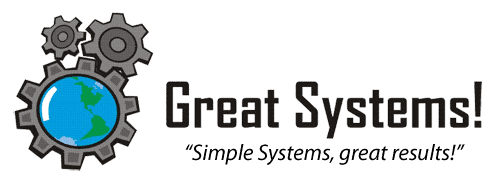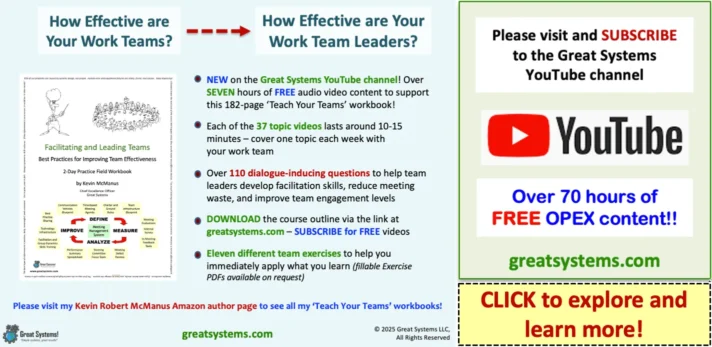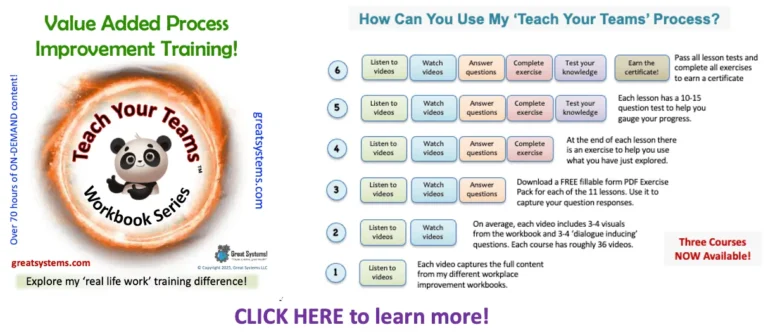How to Measure and Improve Team Meeting Effectiveness
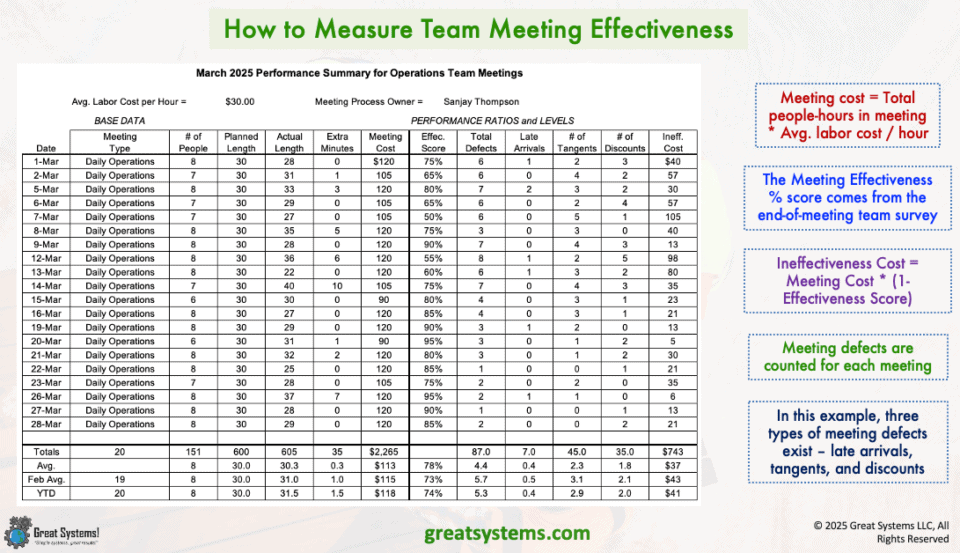
How Do You Measure and Improve Team Meeting Effectiveness?
Do your leaders know how to measure and improve team meeting effectiveness? When I first became an Industrial Engineer back in the day, we had regular meetings in our company. However, that rate pales with today's 'meeting hours per day' rate in organizations.
Personally, I feel too many meetings occur in the workplace each day. Plus, I think that a large percentage of these meetings are much less effective than they could be. My customers consistently feel the same way.
Ironically, it is not that hard to systematically reduce meeting waste for good. Meetings are a process. In turn, if we minimize process errors and defects, we reduce the waste in that process. Do your team leaders know how to systematically measure and improve team meeting effectiveness?
Personally, I feel too many meetings occur in the workplace each day. Plus, I think that a large percentage of these meetings are much less effective than they could be. My customers consistently feel the same way.
Ironically, it is not that hard to systematically reduce meeting waste for good. Meetings are a process. In turn, if we minimize process errors and defects, we reduce the waste in that process. Do your team leaders know how to systematically measure and improve team meeting effectiveness?
Do You Like to Attend Meetings?
Think about it. What is your reaction when you receive a meeting invite? Do you look forward to the meeting date and time with anticipation and enthusiasm?
Conversely, does the invitation invoke a series of bad, boring, or otherwise unproductive meeting memories (and feelings) from the past? Has work become nothing more than days after days of meetings?
It really pains me to think, let alone state, that we have too many meetings in our companies today. For over forty years, I have been a passionate advocate for total work team engagement and participative management.
Meetings are a key vehicle that support daily work team engagement. Meetings help engage a higher percentage of your people in decision making. When effectively executed, meetings help align the daily efforts of the workforce with what is important to the organization.
Unfortunately, I feel that we have lost our focus about the PURPOSE of formal meetings. ALSO, not enough people know what a successful meeting experience should actually look, sound, and feel like.
In short, today's meetings contain too much time waste and are largely unproductive!
Conversely, does the invitation invoke a series of bad, boring, or otherwise unproductive meeting memories (and feelings) from the past? Has work become nothing more than days after days of meetings?
It really pains me to think, let alone state, that we have too many meetings in our companies today. For over forty years, I have been a passionate advocate for total work team engagement and participative management.
Meetings are a key vehicle that support daily work team engagement. Meetings help engage a higher percentage of your people in decision making. When effectively executed, meetings help align the daily efforts of the workforce with what is important to the organization.
Unfortunately, I feel that we have lost our focus about the PURPOSE of formal meetings. ALSO, not enough people know what a successful meeting experience should actually look, sound, and feel like.
In short, today's meetings contain too much time waste and are largely unproductive!
How Much Team Meeting Waste Truly Exists?
Today's technology enables more people to get together more frequently. Do we effectively use our capacity to meet via video or mobile? How often do we compromise the true value of face-to-face communication in favor of less effective approaches?
Video and mobile approaches help ensure that people have the chance to hear what they need to hear. However, they fail to ensure that people truly do hear the intended message. For most people, meetings make up the majority of their workday.
In other words, organizations invest a lot of money EACH DAY in meetings. Do you get what you pay for? To what degree does each meeting add value to the organization? What percentage of meeting time is waste?
A Lack of Team Openness Results in Team Meeting Waste
If we could be (and felt comfortable being) honest about our opinions on meetings, I think we would find that most of us feel that meetings are often ineffective. Some might even say that meetings do more damage than good. The mere fact that we may not feel comfortable about honestly stating our opinions on meeting effectiveness indicates an openness problem.
Video and mobile approaches help ensure that people have the chance to hear what they need to hear. However, they fail to ensure that people truly do hear the intended message. For most people, meetings make up the majority of their workday.
In other words, organizations invest a lot of money EACH DAY in meetings. Do you get what you pay for? To what degree does each meeting add value to the organization? What percentage of meeting time is waste?
A Lack of Team Openness Results in Team Meeting Waste
If we could be (and felt comfortable being) honest about our opinions on meetings, I think we would find that most of us feel that meetings are often ineffective. Some might even say that meetings do more damage than good. The mere fact that we may not feel comfortable about honestly stating our opinions on meeting effectiveness indicates an openness problem.
Without openness, the destiny of most of our meetings is to fail. How much time and money does your organization spend on meetings each day? What percentage of this investment adds value? How significant are your meeting waste streams?
Key Questions to Help Improve Team Meeting Effectiveness
On average, one would expect that meetings your organizational leaders conduct are the most effective. Is that the case in your company? How do you analyze the way people spend time in your organization's meetings?
What percentage of that time investment adds value? I regularly interface with a lot of people in many different organizations. Rarely do I meet folks that measure and trend team meeting effectiveness over time.
• Without regular data for this key work process with high resource demands, how can one improve it?
• How much waste exists in your meetings?
• What do your daily, weekly, and monthly meeting waste trends reflect?
To assess the degree to which a given meeting adds value, you must first define clear goals for EACH meeting type. Consider these questions to help you define such meeting goals:
• Who are the customers of the meeting’s output?
• What requirements do these customers expect the meeting process to meet or exceed?
• How do you consistently identify the customers of your meetings and their key meeting requirements?
• Does each team member view their meeting peers as customers of that gathering?
• How often does the term 'customer' even enter the team meeting effectiveness discussion?
What percentage of that time investment adds value? I regularly interface with a lot of people in many different organizations. Rarely do I meet folks that measure and trend team meeting effectiveness over time.
• Without regular data for this key work process with high resource demands, how can one improve it?
• How much waste exists in your meetings?
• What do your daily, weekly, and monthly meeting waste trends reflect?
To assess the degree to which a given meeting adds value, you must first define clear goals for EACH meeting type. Consider these questions to help you define such meeting goals:
• Who are the customers of the meeting’s output?
• What requirements do these customers expect the meeting process to meet or exceed?
• How do you consistently identify the customers of your meetings and their key meeting requirements?
• Does each team member view their meeting peers as customers of that gathering?
• How often does the term 'customer' even enter the team meeting effectiveness discussion?
What Does Team Meeting Waste Look Like?
From an idealist perspective, we should use meetings to create dialogue. Dialogue, versus discussion, leads to higher levels of understanding. Greater understanding translates into more effective problem solving, planning, and work systems improvement.
In too many cases, my meeting reality has unfortunately been quite different than this. Typically, I see people use too much meeting time to simply share information. Ideally, we should read, or otherwise review, such information in the time between meetings.
Often, too many tangential discussions occur that result in team meeting waste (lost time). Tangential, off-track discussions fail to focus on the customer requirements of the meeting.
I have experienced, and consistently hear about, too many meetings where the use of agendas is non-existent. In those cases where agenda use does occur, teams often fail to follow the agenda design.
• How different are your meeting experiences?
• How effectively do you plan and manage your regular meeting processes?
• What is the monthly cost of your meeting waste?
In too many cases, my meeting reality has unfortunately been quite different than this. Typically, I see people use too much meeting time to simply share information. Ideally, we should read, or otherwise review, such information in the time between meetings.
Often, too many tangential discussions occur that result in team meeting waste (lost time). Tangential, off-track discussions fail to focus on the customer requirements of the meeting.
I have experienced, and consistently hear about, too many meetings where the use of agendas is non-existent. In those cases where agenda use does occur, teams often fail to follow the agenda design.
• How different are your meeting experiences?
• How effectively do you plan and manage your regular meeting processes?
• What is the monthly cost of your meeting waste?
From Team Meeting Waste to Dialogue and Relationship Building
Over the past two years, many more virtual meetings were held. In some cases, the virtual approach provides benefits. However, most would also agree that we have work to do before optimum 'hybrid meeting' designs are in use.
Most people would agree that a significant portion of the message we communicate gets lost when we can’t observe body language or facial expressions. Plus, it is important to be able to 'feel' the room. Yet, we continue to gravitate towards communication approaches that discount the need for 'in person' communication.
I don't want to sound like a technophobe here. I do want to define, in my own mind, when it is more effective to meet virtually versus ‘in person.’ We need quality human interaction to build strong relationships.
Plus, strong team relationships are requisite for high performance. How do our current meeting execution approaches help build, versus tear down, relationships?
Most people would agree that a significant portion of the message we communicate gets lost when we can’t observe body language or facial expressions. Plus, it is important to be able to 'feel' the room. Yet, we continue to gravitate towards communication approaches that discount the need for 'in person' communication.
I don't want to sound like a technophobe here. I do want to define, in my own mind, when it is more effective to meet virtually versus ‘in person.’ We need quality human interaction to build strong relationships.
Plus, strong team relationships are requisite for high performance. How do our current meeting execution approaches help build, versus tear down, relationships?
Five Simple Ways to Meaasure and Improve Team Meeting Effectiveness
The possible solutions to help us break out of our meeting waste death spirals are not complicated to implement. To start, define your key meeting types and the customers of those meetings.
Second, clarify what those customers expect from a given type of meeting.
It is easy to measure your effectiveness in satisfying these expectations at the end of each meeting. Plus, each team should trend meeting waste and effectiveness over time to show improvement exists. An end-of-meeting survey is one of the best ways to measure team expectation satisfaction levels.
Additonal team meeting effectiveness measures include (1) number of team meeting defects / ground rule violations, (2) use of a time-based agenda at every meeting, and (3) total team meeting and cost. Plus, you can use the team meeting effectiveness score and team meeting cost data to estimate a team meeting wste cost.
Finally, identify the common types of meeting defects that exist, and find the root causes of those defects. How much time do you invest in meetings each day? To what degree is the time investment required to make and adhere to these simple changes worth it?
It is easy to measure your effectiveness in satisfying these expectations at the end of each meeting. Plus, each team should trend meeting waste and effectiveness over time to show improvement exists. An end-of-meeting survey is one of the best ways to measure team expectation satisfaction levels.
Additonal team meeting effectiveness measures include (1) number of team meeting defects / ground rule violations, (2) use of a time-based agenda at every meeting, and (3) total team meeting and cost. Plus, you can use the team meeting effectiveness score and team meeting cost data to estimate a team meeting wste cost.
Finally, identify the common types of meeting defects that exist, and find the root causes of those defects. How much time do you invest in meetings each day? To what degree is the time investment required to make and adhere to these simple changes worth it?
LISTEN NOW to my 'Too Many Teams, Too Little Team Effectiveness' Real Life Work podcast
How Does Team Infrastructure Drive Daily Kaizen and Operational Excellence?
If you want your work team infrastructure to drive kaizen and operational excellence, you need three types of teams in place. All staff are members of at least one process work team.
Process work teams exist in value streams or support value streams. The bulk of daily work time is spent here.
Also, people may serve roles on improvement teams. Typically, multiple types of improvement teams exist in a workplace. Examples include standing (focus) teams or temporary (project) teams.
The team structure defines how many teams of each type are needed to support strategy. In general, value stream and value stream support staff spend 90% of their time in their process work team. Engineers may spend 100% of their work time on one or more improvement teams.
Organizations need effective value stream and stream support work teams to drive continuous improvement in an organization. Since they do not have much time away from the job to meet, these work teams do not have time to develop projects.
Their role is to identify and prioritize projects that need to be implemented. The lack of project time in their jobs limits their ability to work on projects themselves.
That is why we need project improvement work teams. People need time away from their primary job to work on projects. A person may be on both a value stream work group and a project team, but that does not have to be the case.
Finally, we need 'focused improvement' work teams to maintain a constant focus on those strategic areas key to the organization. Example focus areas include safety, cost reduction, waste reduction, recognition, and management.
Process work teams exist in value streams or support value streams. The bulk of daily work time is spent here.
Also, people may serve roles on improvement teams. Typically, multiple types of improvement teams exist in a workplace. Examples include standing (focus) teams or temporary (project) teams.
The team structure defines how many teams of each type are needed to support strategy. In general, value stream and value stream support staff spend 90% of their time in their process work team. Engineers may spend 100% of their work time on one or more improvement teams.
Organizations need effective value stream and stream support work teams to drive continuous improvement in an organization. Since they do not have much time away from the job to meet, these work teams do not have time to develop projects.
Their role is to identify and prioritize projects that need to be implemented. The lack of project time in their jobs limits their ability to work on projects themselves.
That is why we need project improvement work teams. People need time away from their primary job to work on projects. A person may be on both a value stream work group and a project team, but that does not have to be the case.
Finally, we need 'focused improvement' work teams to maintain a constant focus on those strategic areas key to the organization. Example focus areas include safety, cost reduction, waste reduction, recognition, and management.
How Effective Are Your PROJECT IMPROVEMENT Work Teams?
Smaller organizations may not have PROJECT work teams. Instead, leaders manage improvement projects on their own, and they engage with their teams as necessary. At least, that is how it should work.
PROJECT teams stay intact until the team finishes their project. In some cases, the team remains intact to work on a new project, as with some Quality Circle or Kaizen Team processes.
Engineering PROJECT teams are one example of a PROJECT team. However, these project teams often do not gather for every meeting. Plus, the job designs of Engineering PROJECT team members include process improvement work time (often 100%).
Limiting factors to PROJECT team effectiveness include leadership skill levels, team group dynamics skills, data availability, and work time available.
PROJECT teams stay intact until the team finishes their project. In some cases, the team remains intact to work on a new project, as with some Quality Circle or Kaizen Team processes.
Engineering PROJECT teams are one example of a PROJECT team. However, these project teams often do not gather for every meeting. Plus, the job designs of Engineering PROJECT team members include process improvement work time (often 100%).
Limiting factors to PROJECT team effectiveness include leadership skill levels, team group dynamics skills, data availability, and work time available.
How Effective are Your FOCUS IMPROVEMENT Work Teams?
All organizations have at least one IMPROVEMENT work team. In some cases, focus teams are known as cross-functional teams. Focus teams meet regularly to address key organizational focus areas.
For example, the senior leadership group is a focus team that meets on a regular basis. Committees and task forces are other examples.
Focus work teams exist to tackle a specific problem or perform a specific task. Their representation includes different functional disciplines or process segments. In some cases, focus teams form on an ad hoc basis.
Other examples of common focus work teams include safety, training, and recognition committees. Also, customer satisfaction teams, waste reduction teams, planning teams, and leadership teams may exist.
Focus work team performance is more difficult to measure. This is due to the cross-functional membership and variability in team process types. In many cases, focus team members do not even track the amount of time they invest in the one, or more, focus teams they are on.
However, significant savings and team performance gains can be made when leaders optimize their use of focus work teams and project work teams.
For example, the senior leadership group is a focus team that meets on a regular basis. Committees and task forces are other examples.
Focus work teams exist to tackle a specific problem or perform a specific task. Their representation includes different functional disciplines or process segments. In some cases, focus teams form on an ad hoc basis.
Other examples of common focus work teams include safety, training, and recognition committees. Also, customer satisfaction teams, waste reduction teams, planning teams, and leadership teams may exist.
Focus work team performance is more difficult to measure. This is due to the cross-functional membership and variability in team process types. In many cases, focus team members do not even track the amount of time they invest in the one, or more, focus teams they are on.
However, significant savings and team performance gains can be made when leaders optimize their use of focus work teams and project work teams.
